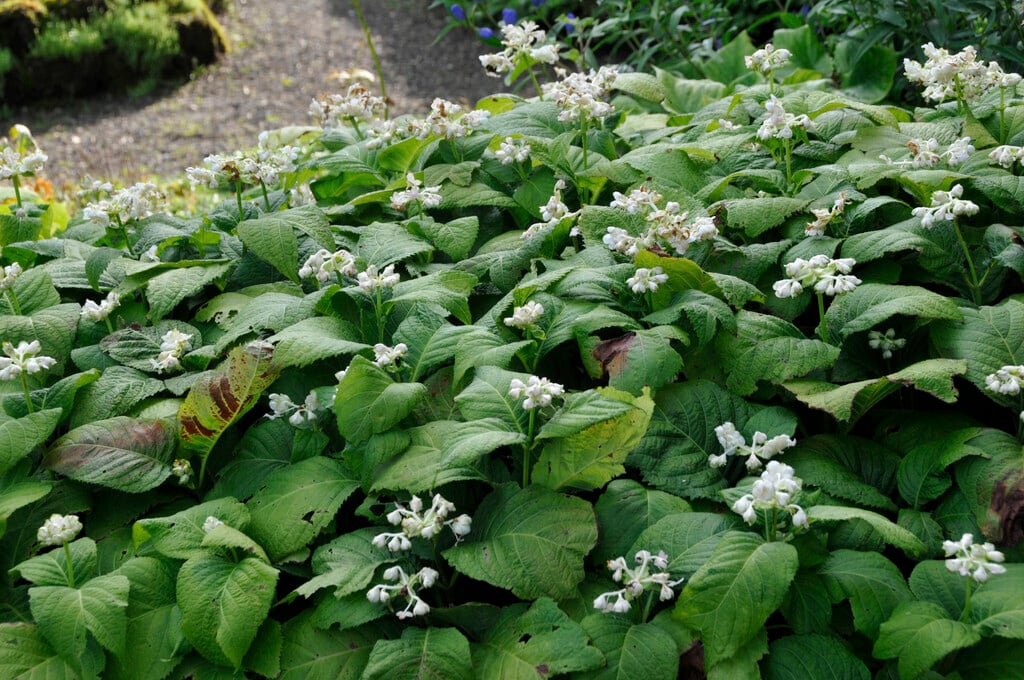Hydrangea bifida
two-lobed false hydrangea
A clump-forming perennial with toothed, oval leaves with a characteristic fish-tail split at the tip. Height 40cm (16in). In summer branched clusters of pure white, hydrangea-like flowers with yellow stamens are borne above the foliage.

Buy this plant
Size
Ultimate height
0.1–0.5 metresTime to ultimate height
2–5 yearsUltimate spread
0.1–0.5 metresGrowing conditions
Moisture
Moist but well–drainedpH
Acid, Alkaline, NeutralColour & scent
| Stem | Flower | Foliage | Fruit | |
| Spring | Green | |||
|---|---|---|---|---|
| Summer | White | Green | ||
| Autumn | Green | |||
| Winter |
Position
- Partial shade
Aspect
East–facing or North–facing or West–facing
Exposure
Sheltered Hardiness
H5Botanical details
- Family
- Hydrangeaceae
- Native to GB / Ireland
- No
- Foliage
- Deciduous
- Habit
- Bushy
- Potentially harmful
- Skin allergen. Wear gloves and other protective equipment when handling. Pets (dogs, cats): Harmful if eaten. For further information and contact numbers regarding pets, see the HTA guide to potentially harmful plants
- Genus
Hydrangea can be deciduous or evergreen shrubs, or self-clinging climbers, with flowers in clusters usually comprising both small fertile and more showy sterile flowers; often good autumn colour
- Name status
Correct
- Plant range
- Japan
How to grow
Cultivation
Grow in any reliably moist, humus-rich soil in partial shade. Shelter from cold, drying winds. Dislikes heat or drought.
Propagation
Propagate from seed sown in containers in a cold frame as soon as ripe. Germination is erratic. Seedlings take several years to reach flowering size. Alternatively, divide clumps in early spring. These can be slow to re-establish.
Suggested planting locations and garden types
- City and courtyard gardens
- Cottage and informal garden
- Flower borders and beds
Pruning
No pruning required. Cut back dead stems in autumn/winter
Pests
May be susceptible to slugs
Diseases
May be susceptible to a leaf spot, powdery mildews, grey moulds (Botrytis) and honey fungus (rarely)
Get involved
The Royal Horticultural Society is the UK’s leading gardening charity. We aim to enrich everyone’s life through plants, and make the UK a greener and more beautiful place.